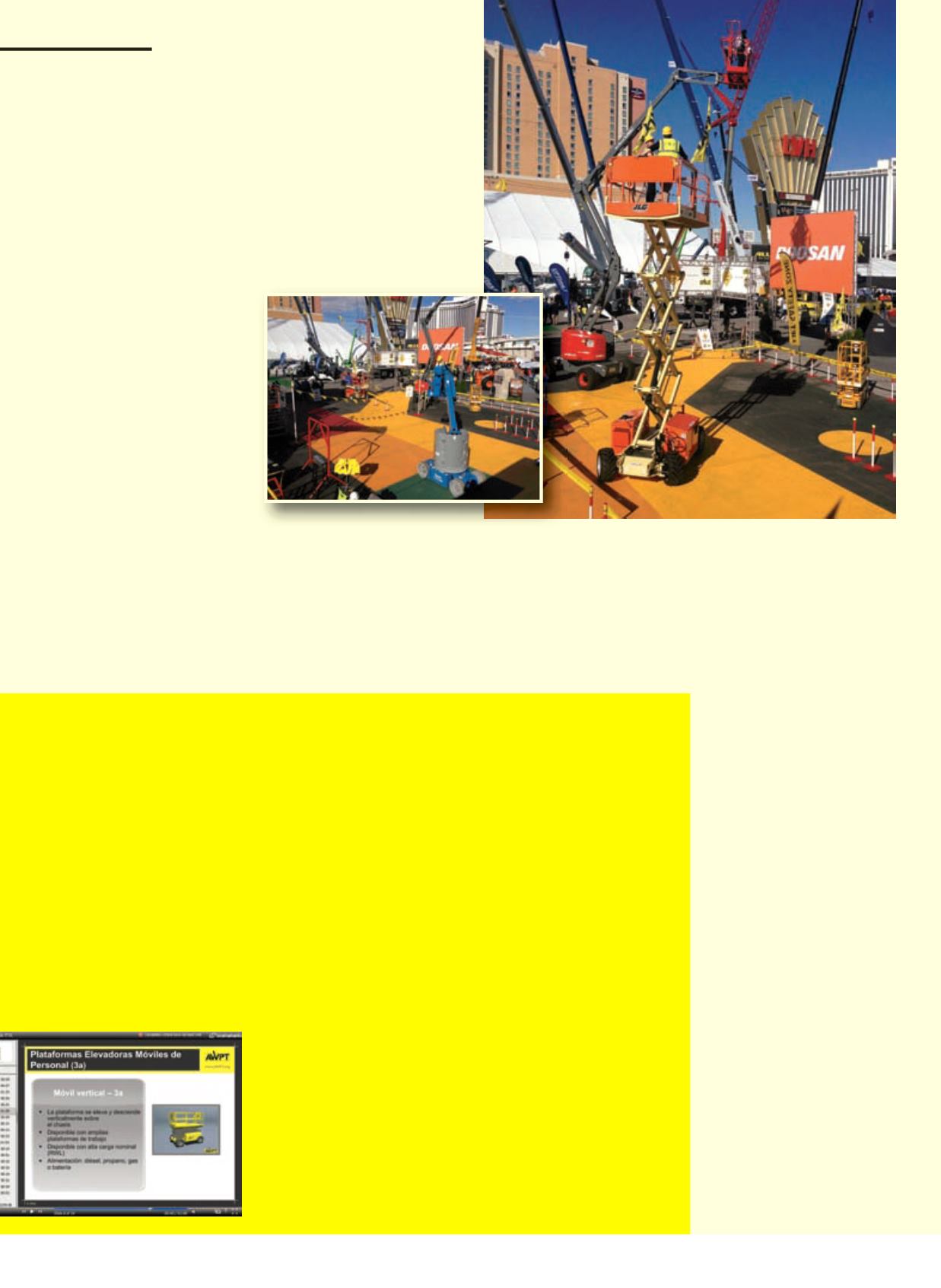
44
ACCESS, LIFT&HANDLERS
APRIL-MAY 2014
IPAF NEWS
boom from electrical pylons
■
30 feet (9m) + fully extended
boom from cables onwooden
poles
These recommended safe
distancesmeet or exceed those
specified inANSI standards and
OSHA requirements.
Tony Groat, IPAFNorthAmerica
has not had specific training in
avoiding electrical hazards should
approach ‘live’ overhead cables.
The IPAF recommendations are
safe distances until the voltage
is determined. It is possible to
work closer to power lines than
the IPAF-recommended safe
distances, but this should only be
undertaken after seeking expert
advice from the power supplier
and implementing extra safety
precautions.”
Sharing findings from IPAF’s
accident reporting project and
PoweredAccess Rental Market
Reports, IPAF technical officer
ChrisWraith said: “In 2013,
all seven reported cases of
electrocutionworldwide occurred
in theUS, where the AWP rental
fleet is estimated at 510,500,
which is 54 percent of theworld
rental fleet.¹ AWPs are probably
the safest way of doing temporary
work at height, so the onus is on
managers and operators to stay
safewhenworking near to power
lines/conductors. Electrocutions
can be prevented– through proper
planning, risk assessment and
management of work at height,
including thorough operator
training and familiarization.”
¹Source:
IPAF accident reporting
project
(
)
and
IPAF PoweredAccess Rental
Market Reports
(
reports).
Keep safe
distances from
power lines
manager, explained: “Operators
or supervisors are often not in
a position to know the voltage
in the power source. Knowing
the voltage is essential to
determine theminimum approach
distance (MAD), which is the
safest distance a personwho
IPAF has called on aerial work
platform (AWP) operators and
managers to always be aware of
and keep safe distanceswhen
working near power lines, in light
of accident datawhich points to
electrocutions as one of the largest
causes of AWP-related fatalities in
theU.S.
The not-for-profit Federation
highlighted this safetymessage
with a dynamic display at the Lift
Safety Zone at theCONEXPO-CON/
AGG show in Las Vegas, which
illustrated the safe andminimum
approach distances that anAWP
should bewhenworking near
power lines.
The IPAF demonstration at the
Lift Safety Zone illustrated two
recommended safe distances:
■
50 feet (15m) + fully extended
AWP operator eLearning
available across the U.S.
IPAF’s AWP operator eLearning
module is available across theU.S.
in both English andSpanish.
“Together with supervised
written and practical testing of
operator skills, the eLearning
module can lead to a PALCard
which proves that the operator
has successfully completed the
training,” said IPAFCEO Tim
Whiteman at the Lift Safety Zone
during theCONEXPO-CON/AGG
show in Las Vegas.
AWP operator eLearning does
not replace practical training.With
the eLearningmodule, trainees
complete the theory (traditional
classroom) part of the course
online at their own pace and time,
using the samematerial as in a
classroom session and learning
the same subjects.
Traineeswho complete the
online sessionmust still pass
a supervised theory test at an
IPAF-approved training center
andmust successfully complete
a half-day of practical training
and testing before being issued
a PALCard (PoweredAccess
Licensed-Registration) as proof of
successfully completed operator
training. IPAF training ismanaged
in theUS andCanada by American
Work Platform Training (AWPT),
IPAF’sNorthAmerican subsidiary.
“Whenever an operator card
is shown on site, the person
in charge should look at who
performed the training, how it
was performed, andwhat level
of testing stands behind the card
issued,” saidWhiteman. “Some
cards appear to confirm training
delivered, but can be obtained in
less than 30minutes online. APAL
Cardmeans that the cardholder
has undergone a complete training
program backed upwith quality
checks, accredited instructors,
supervisedwritten and practical
testing, controlled class sizes and
course duration, and a central
register of valid cards.”
■
More about AWP operator
eLearning is at
/
eLearning
Themain causes of fatalities and themachine type involved


